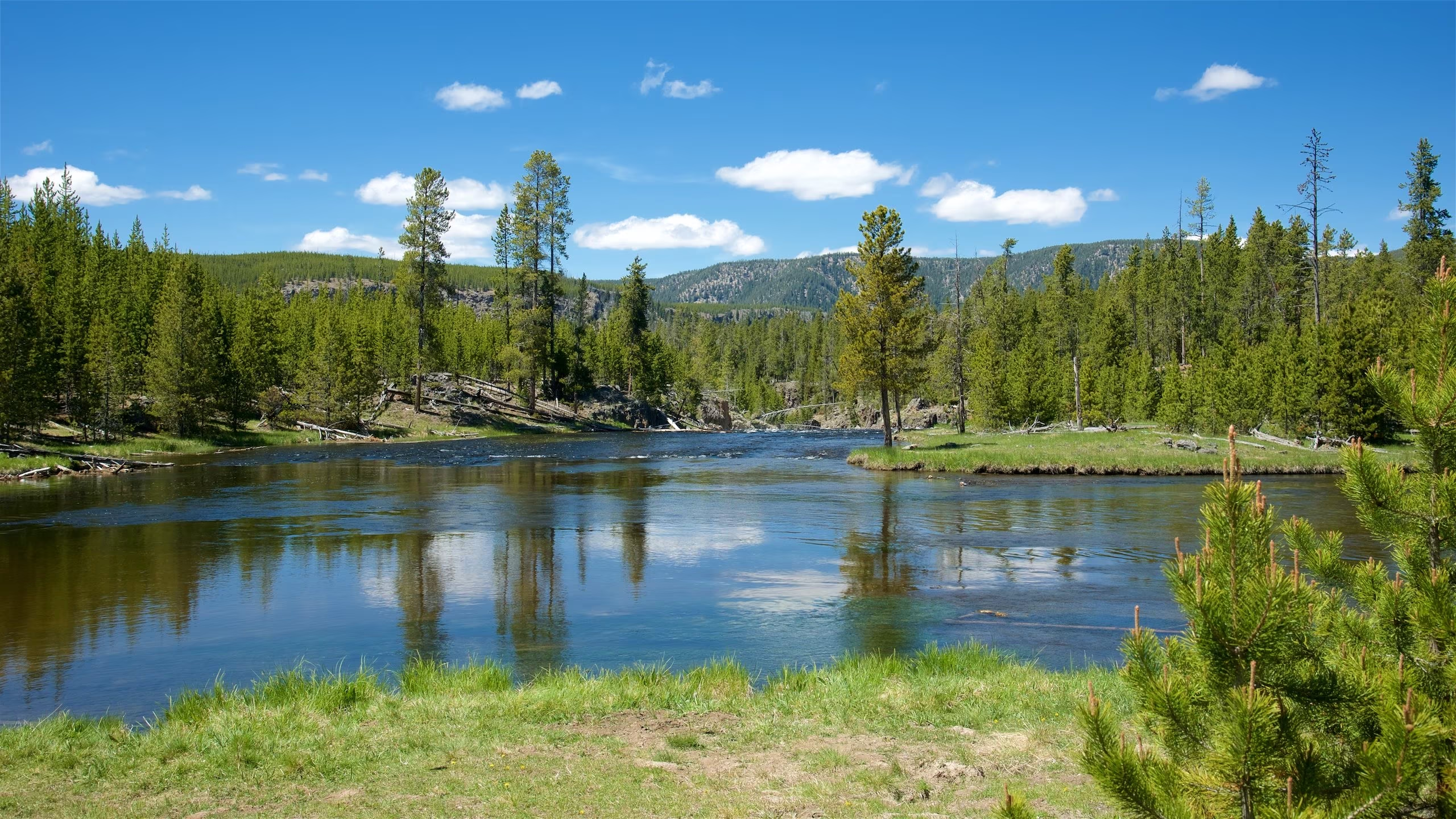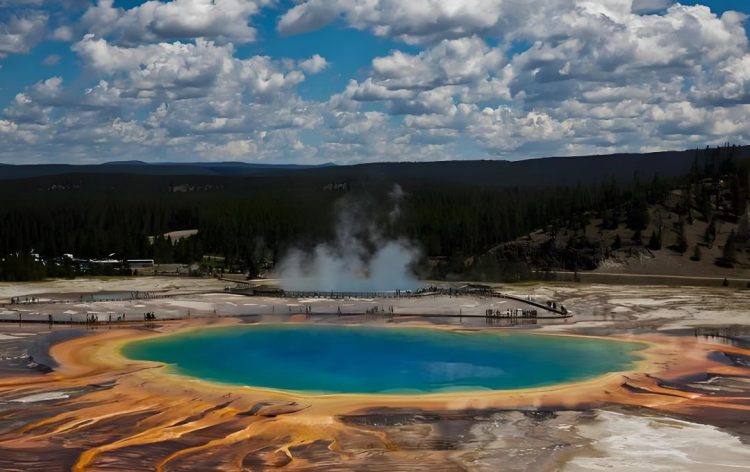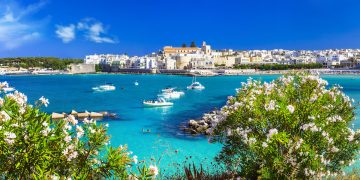Introduction
Yellowstone National Park, established in 1872 as the first national park in the world, is an unparalleled destination for travelers seeking a blend of breathtaking natural landscapes, diverse wildlife, and unique geothermal features. Covering over 2.2 million acres across Wyoming, Montana, and Idaho, the park offers countless opportunities for adventure, relaxation, and education. A trip to Yellowstone is not just a journey through its awe-inspiring landscapes but also a deep dive into its rich history, cultural heritage, and the conservation efforts that have shaped it into the marvel it is today.
This article provides a detailed guide to making the most of your visit to Yellowstone National Park, highlighting its key attractions, tips for planning your trip, and the reasons why a journey to this iconic destination is truly unforgettable.
1. Planning Your Trip to Yellowstone
Best Time to Visit
Yellowstone’s beauty changes with the seasons, offering visitors unique experiences throughout the year:
- Spring (April to June): Witness the park come to life as snow melts, wildflowers bloom, and animals emerge from hibernation.
- Summer (July to August): The peak season, ideal for hiking, wildlife spotting, and visiting the park’s iconic features.
- Fall (September to October): A quieter time with stunning fall foliage and cooler temperatures.
- Winter (November to March): A magical, snowy wonderland perfect for cross-country skiing, snowshoeing, and seeing geothermal features against a frosty backdrop.
Choosing Where to Stay
Accommodations in and around Yellowstone cater to a range of preferences:
- Inside the Park: Historic lodges such as the Old Faithful Inn offer a chance to stay close to key attractions.
- Outside the Park: Gateway towns like West Yellowstone, Gardiner, and Cody provide a variety of hotels, cabins, and campgrounds.
Packing Essentials
Be prepared for Yellowstone’s varied climate and terrain:
- Layered clothing for unpredictable weather.
- Sturdy hiking boots.
- Binoculars and cameras for wildlife and scenic views.
- A reusable water bottle and snacks for day trips.
2. Exploring Yellowstone’s Iconic Attractions
Old Faithful and the Upper Geyser Basin
Old Faithful, the park’s most famous geyser, erupts roughly every 90 minutes, shooting water up to 180 feet in the air. Surrounding the geyser is the Upper Geyser Basin, home to hundreds of geothermal features, including colorful hot springs and mud pots.
Grand Prismatic Spring
The largest hot spring in the United States, Grand Prismatic Spring, captivates visitors with its vibrant colors created by thermophilic microorganisms. The nearby Fairy Falls Trail offers a spectacular view of this natural wonder from above.
Yellowstone Lake
This massive alpine lake is perfect for kayaking, fishing, or simply enjoying the serene beauty of its crystal-clear waters. Its shoreline is dotted with picnic areas and hiking trails.
The Grand Canyon of the Yellowstone
This breathtaking canyon, carved by the Yellowstone River, features dramatic cliffs and two iconic waterfalls—Lower Falls and Upper Falls. The Artist Point overlook provides one of the park’s most picturesque views.
Lamar Valley
Known as the “Serengeti of North America,” Lamar Valley is a prime spot for wildlife enthusiasts. Visitors can spot bison herds, elk, wolves, and grizzly bears roaming the vast meadows.
Mammoth Hot Springs
The terraced limestone formations of Mammoth Hot Springs are a unique geological feature, constantly changing as water and minerals flow through the area.

3. Engaging Activities for Every Traveler
Hiking
Yellowstone boasts over 900 miles of trails, ranging from easy walks to challenging backcountry routes. Popular hikes include:
- Mystic Falls Trail: A moderate hike leading to a stunning waterfall.
- Mount Washburn Trail: Offers panoramic views of the park.
- Fairy Falls Trail: Leads to one of Yellowstone’s tallest waterfalls.
Wildlife Watching
Early mornings and evenings are the best times to spot animals. Bring binoculars and head to areas like Hayden Valley and Lamar Valley for the best chances of seeing iconic wildlife.
Ranger-Led Programs
Yellowstone offers a variety of educational programs, including guided walks, talks, and campfire presentations. These activities provide insights into the park’s geology, history, and wildlife.
Boating and Fishing
With permits, visitors can enjoy fishing in the park’s rivers and lakes or rent a boat to explore Yellowstone Lake.
4. The Cultural and Historical Aspect of Yellowstone
Indigenous Heritage
Yellowstone is the ancestral land of many Native American tribes, including the Shoshone, Crow, and Blackfeet. Visitors can learn about their history and cultural practices through exhibits and ranger programs.
Historic Structures
The park is home to historic buildings like the Old Faithful Inn, built in 1904, and the Roosevelt Arch, the original northern entrance to the park.
The Conservation Movement
Yellowstone’s establishment as the first national park was a pivotal moment in the global conservation movement, inspiring the creation of protected areas worldwide.
5. Tips for a Memorable Yellowstone Experience
Safety First
- Wildlife Safety: Maintain a safe distance from animals (at least 100 yards from bears and wolves, 25 yards from other wildlife).
- Geothermal Areas: Stay on boardwalks and marked trails to avoid injury.
- Weather Preparedness: Yellowstone’s weather can change rapidly, so always check forecasts and be prepared for sudden storms.
Avoiding Crowds
- Visit popular attractions early in the morning or late in the afternoon.
- Explore less-visited areas like the Bechler region or the Thorofare.
Sustainable Travel
- Follow Leave No Trace principles to minimize your impact on the environment.
- Use park shuttles to reduce traffic and emissions.
6. Why Yellowstone Leaves a Lasting Impression
Yellowstone National Park is a place where nature’s wonders and human curiosity converge. Its geothermal features, wildlife, and landscapes offer endless opportunities for exploration and discovery. But beyond its physical beauty, Yellowstone’s cultural significance and role in the conservation movement make it a destination that resonates deeply with visitors.
A trip to Yellowstone is more than a vacation—it’s an unforgettable journey into the heart of one of the world’s most extraordinary natural and cultural treasures. Whether you’re marveling at the eruption of Old Faithful, hiking through pristine wilderness, or learning about the park’s rich history, Yellowstone promises an experience that will inspire and captivate you long after you leave its boundaries.
So, what makes a trip to Yellowstone National Park an unforgettable experience? It’s the combination of awe-inspiring nature, cultural heritage, and the realization that this remarkable place belongs to everyone, preserved for generations to come.





















